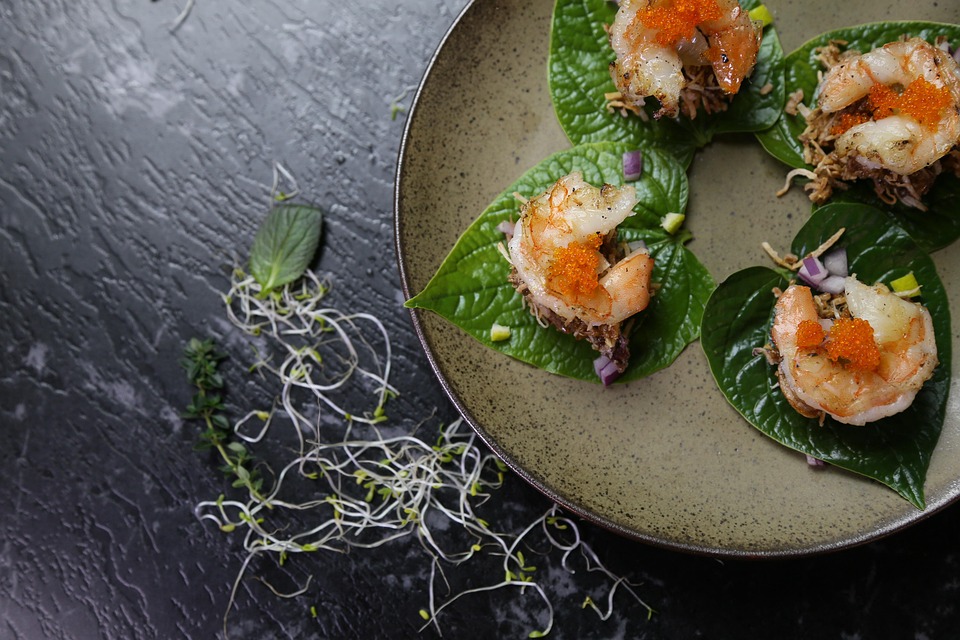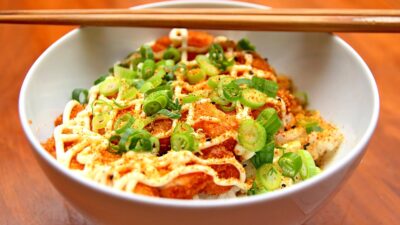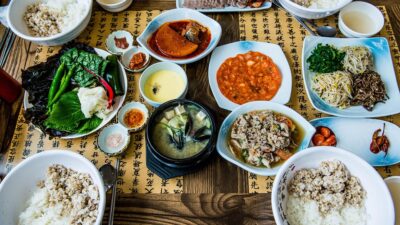Thailand, known for its stunning landscapes, rich culture, and warm hospitality, is equally celebrated for its vibrant and diverse cuisine. Thai food, with its intricate blend of flavors, colors, and textures, tells a story of its rich heritage, influenced by various cultures over centuries. From the bustling street markets of Bangkok to the serene floating markets of the countryside, a culinary adventure in Thailand invites you to savor a unique tapestry of tastes that are as dynamic as the country itself.
The Foundations of Thai Cuisine
Thai cuisine is built on four fundamental tastes: sweet, sour, salty, and spicy. These elements are skillfully balanced to create dishes that are multidimensional and mouthwatering. Key ingredients include:
- Herbs and Spices: Fresh herbs like basil, cilantro, and mint, along with spicy components like chili peppers and black pepper, are staples in Thai cooking.
- Fish Sauce and Shrimp Paste: Essential for achieving that umami depth, these fermented ingredients contribute to the authentic flavors that define many Thai dishes.
- Coconut Milk: Creamy and sweet, coconut milk is used in curries and desserts alike, providing a luscious texture that complements other flavors.
Street Food: A Flavorful Adventure
No trip to Thailand is complete without indulging in its legendary street food. From sizzling woks to fragrant stalls, street vendors offer a panorama of tastes that reflect the locality.
Pad Thai
Widely known as Thailand’s national dish, Pad Thai consists of stir-fried rice noodles tossed with a medley of proteins ranging from shrimp to tofu, and garnished with crushed peanuts, lime, and bean sprouts. The perfect balance of sweet, sour, and savory makes it a must-try.
Som Tum (Green Papaya Salad)
A popular street food dish from Isaan, Som Tum is a refreshing salad that combines shredded green papaya, tomatoes, peanuts, and a fiery chili dressing. It’s the perfect representation of the Thai concept of ‘balance,’ combining heat, sweetness, and acidity.
Satay
Grilled skewers of marinated meat, usually chicken or pork, are served with a luscious peanut sauce. Satay is often complemented by a tangy cucumber relish and is a popular snack or appetizer.
Regional Diversity in Thai Cuisine
As you journey through Thailand, you’ll discover distinct regional cuisines, each with its local ingredients and culinary traditions.
Northern Thailand
Characterized by milder flavors, Northern Thai cuisine, particularly the dishes from Chiang Mai, features herbal sausages (Sai Oua) and Khao Soi, a coconut curry noodle soup topped with crispy noodles. The use of fresh herbs and seasonal vegetables is predominant.
Northeastern Thailand (Isaan)
Hands down, the spiciest region, Isaan cuisine is famous for its bold flavors and hearty dishes. Larbs (meat salads with herbs and spices), sticky rice, and grilled meats reflect the rustic and communal dining style that is at the heart of Isaan culture.
Southern Thailand
Known for its use of fresh seafood and aromatic spices, Southern Thai cuisine offers dishes like Massaman Curry and Tom Kha (coconut soup). The influence of Malay cuisine brings a unique twist, with the use of curry pastes containing a variety of fragrant spices.
Desserts: A Sweet Ending
Ending your culinary journey in Thailand with its array of desserts is a delightful experience.
Mango Sticky Rice (Khao Niew Mamuang)
This famous dessert is simple yet indulgent, made from glutinous rice, fresh mango slices, and a drizzle of sweet coconut milk. Each bite is a sweet harmony that dances on the palate.
Coconut Pudding (Khanom Krok)
These mini coconut puddings are cooked in a special cast-iron pan, creating a crispy edge and a soft, creamy center. Often topped with sweet or savory accompaniments, they are a beloved street food snack.
The Art of Dining in Thailand
Dining in Thailand extends beyond merely satisfying hunger; it is often an experience filled with social connections. The shared meal concept, where dishes are placed at the center of the table for everyone to enjoy, encourages conversation and camaraderie.
Experiencing Thai cuisine also involves understanding the cultural practices around it. For instance, it’s common to use a fork and spoon, with the fork serving to push food onto the spoon rather than directly to the mouth—a unique aspect of Thai dining etiquette.
Conclusion: An Unforgettable Culinary Journey
Thailand’s culinary landscape is a captivating exploration of flavors, aromas, and traditions. Whether you’re wandering through markets, savoring dishes at street stalls, or dining in upscale restaurants, each meal offers an opportunity to engage with the culture and history of this vibrant country. Savoring the spice in Thailand’s food invites you on an unforgettable gastronomic journey that will linger in your memory long after your visit. Embrace the flavors, embrace the passion, and savor every moment!



